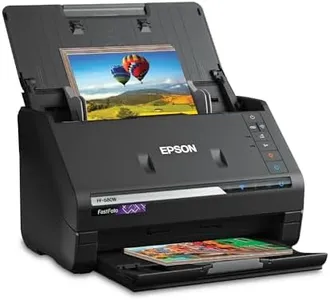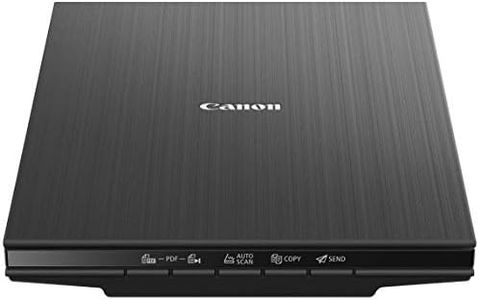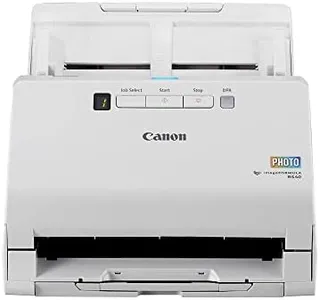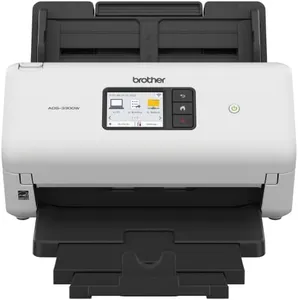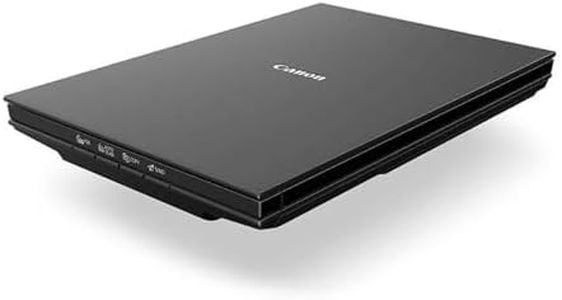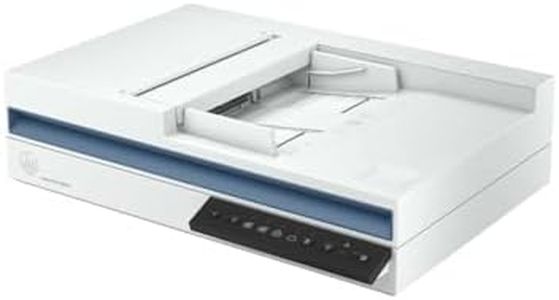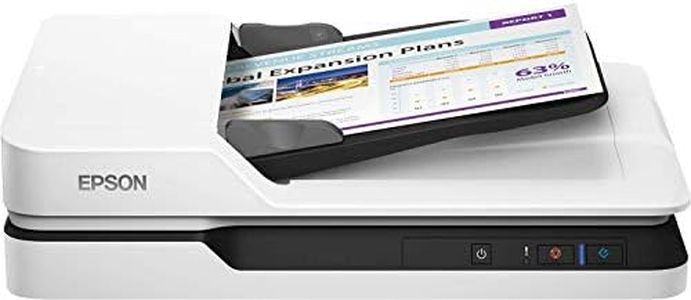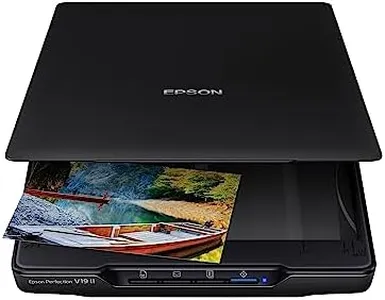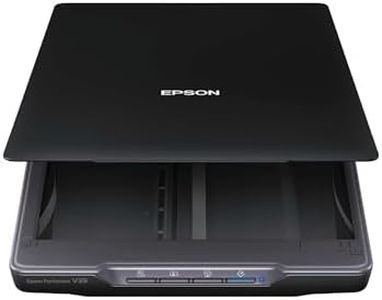We Use CookiesWe use cookies to enhance the security, performance,
functionality and for analytical and promotional activities. By continuing to browse this site you
are agreeing to our privacy policy
10 Best Flatbed Photo Scanners
From leading brands and best sellers available on the web.By clicking on a link to a third party's website, log data is shared with that third party.
Buying Guide for the Best Flatbed Photo Scanners
When choosing a flatbed photo scanner, it’s important to focus on your specific scanning needs, such as the types of photos, documents, or film you want to digitize and how you plan to use the scanned images. Pay attention to a scanner’s image quality, scan speed, supported sizes, and connectivity options, as these will affect your overall experience and whether the scanner fits your workspace and workflow. Take time to compare main specifications and think about your typical use cases so that the scanner you select aligns with your expectations and intended uses.Optical Resolution (DPI)Optical resolution, measured in dots per inch (DPI), determines the level of detail that the scanner can capture from a photo or document. Higher DPI values mean the scanner can produce sharper and more detailed digital images, which is particularly important if you plan to enlarge scanned photos or preserve fine details from old pictures. Entry-level scanners typically offer between 600 and 1200 DPI, suitable for everyday photo scanning and document archiving. For serious photo preservation, artwork, or film negatives, look for 2400 DPI or higher. If you only need digital copies for online sharing or standard prints, moderate DPI will suffice. Choose higher DPI if you intend to create large, high-quality prints or work with tiny originals like film negatives.
Bit DepthBit depth refers to the amount of color information a scanner can capture per pixel, affecting color accuracy and gradation in your digital scans. A higher bit depth (such as 48-bit color) allows for more accurate color reproduction and smoother transitions, which is especially important for scanning photos with subtle color details. Most standard flatbed scanners offer 24-bit color, which is adequate for casual use and everyday photos. For archival or professional use, seek models offering higher bit depths, as they better preserve the richness of photos and artwork. If your goal is to digitize family snapshots, standard bit depth will do, but for editing, restoration, or archival purposes, higher bit depth is preferable.
Scan Area SizeThe scan area size tells you the largest item you can scan in a single pass, typically measured in inches. Standard flatbed scanners handle up to A4 or letter size (about 8.5 x 11.7 inches), which is enough for everyday photos and documents. If you need to scan larger items, such as artwork, scrapbooks, or oversized photographs, look for a flatbed with a larger scanning surface, like A3 size. Think about the largest item you expect to scan regularly; match your choice to your actual needs to avoid having to stitch scans together from multiple passes.
Scan SpeedScan speed indicates how quickly the scanner can produce a digital image, usually measured in seconds per page or scan. Faster scanners are convenient for larger projects or batch scanning, saving you time. Scan speed varies with resolution: higher DPI settings typically slow down the process. If you only scan occasionally or in small quantities, a slower scanner is acceptable. For regular, high-volume projects, a faster model will enhance productivity and make the task less tedious.
Film/Slide Scanning CapabilitySome flatbed photo scanners come with adapters or built-in support for scanning film negatives and slides, allowing you to digitize 35mm, medium format, or even larger film types. This is usually done with a special transparency unit or holder. If you intend to preserve old film or slides, make sure your scanner supports this feature—scan quality for film relies on a combination of high optical resolution and good film holders. However, if you only need to scan prints and documents, this ability is not essential and can be disregarded.
ConnectivityScanners connect to your computer or devices via USB, wireless (Wi-Fi), or sometimes Ethernet. USB is the most common and reliable, offering stable and fast data transfer. Wireless connectivity adds convenience if you want to place the scanner away from your computer or use it with multiple devices. Choose the connection type that suits your setup: wired for speed and stability; wireless for flexibility and convenience, especially if scanning from mobile devices or different computers.
Software FeaturesBundled software greatly affects your scanning experience, offering tools such as image enhancement, dust and scratch removal, and easy sharing or organizing options. Look for software that suits your level of expertise and goals: simple, guided interfaces for beginners or advanced features for users who wish to edit and restore scans. If you often want to correct fading, remove blemishes, or automate repetitive tasks, pay attention to included software capabilities. For straightforward scanning, basic software is sufficient; for restoration or batch tasks, advanced features are helpful.
